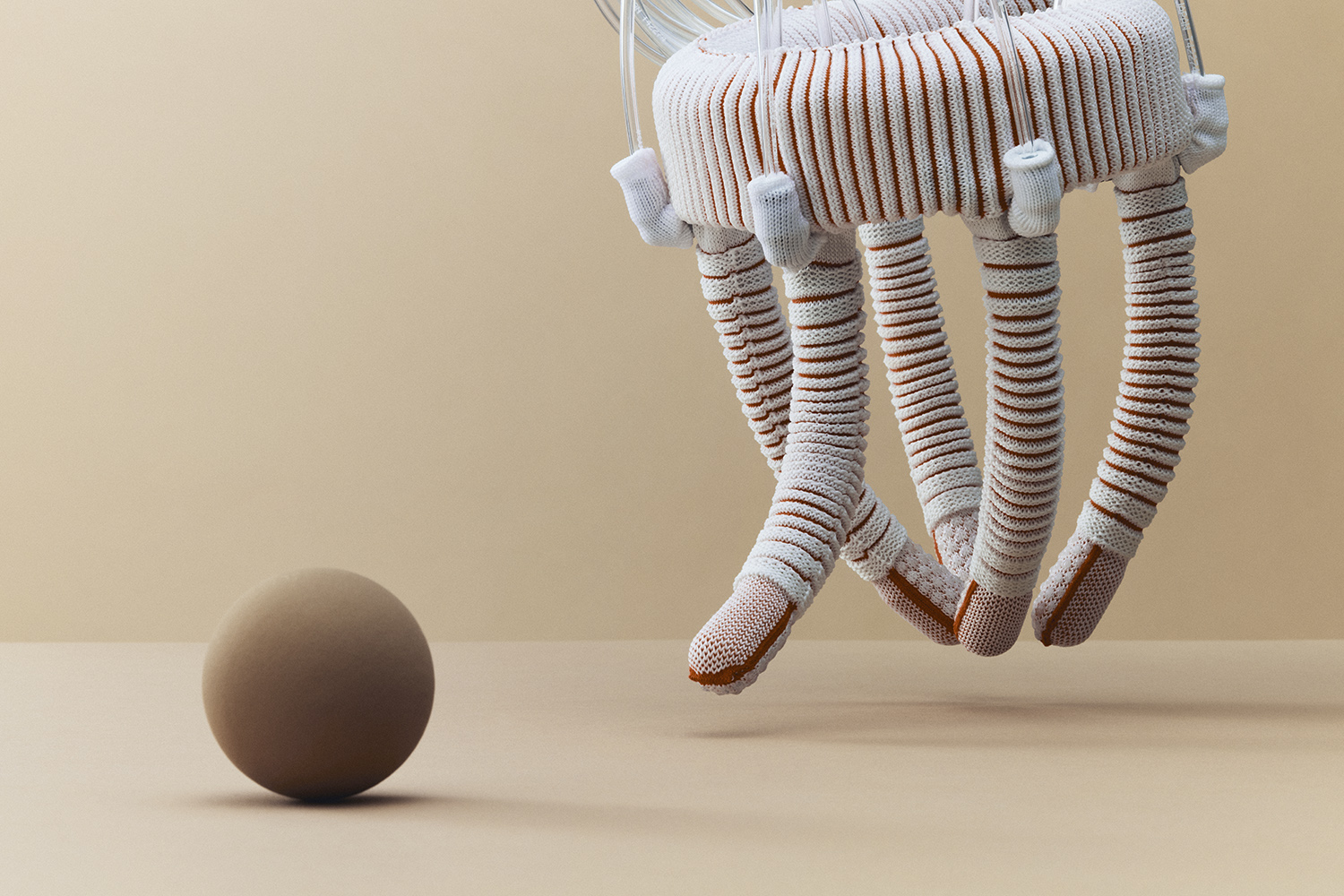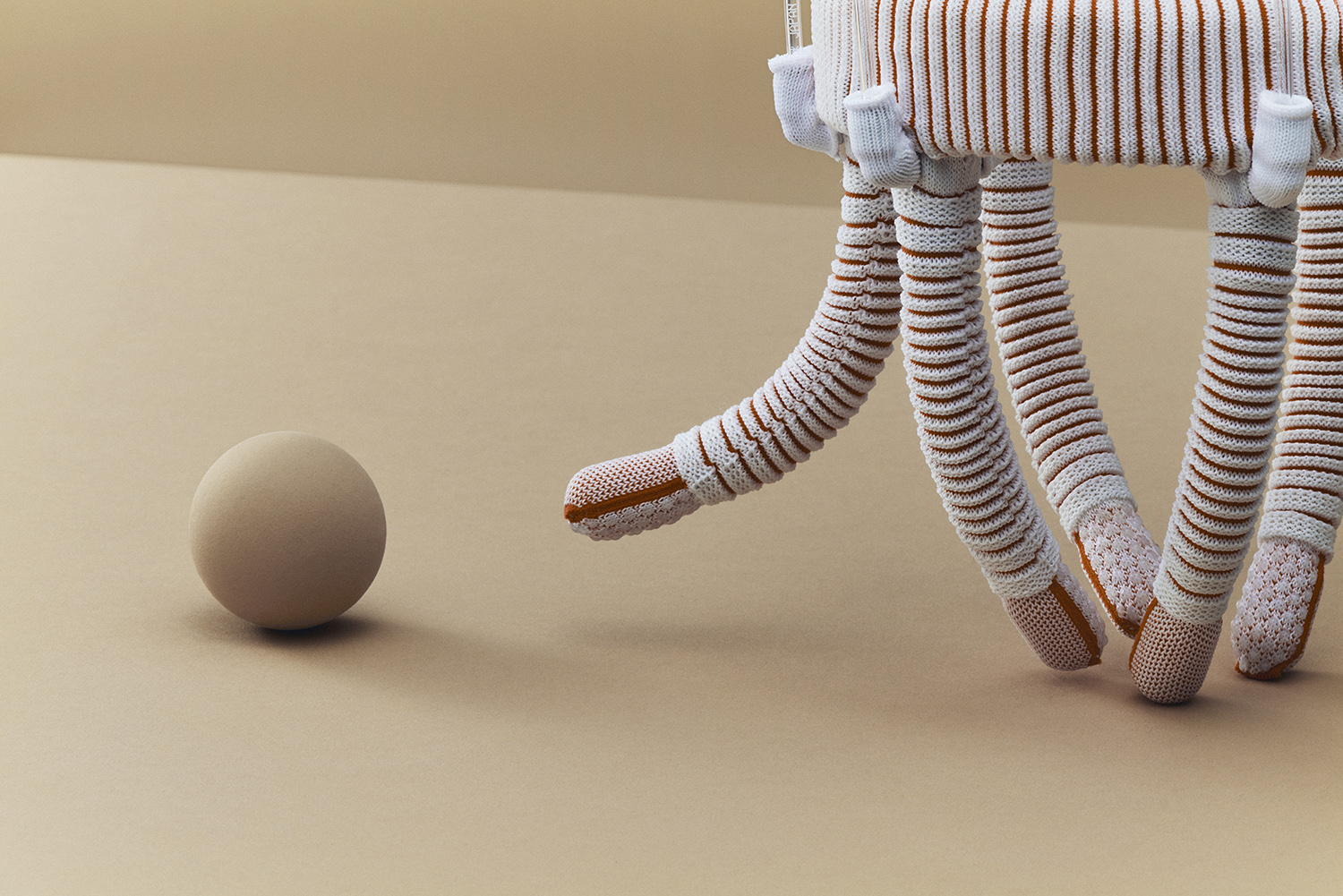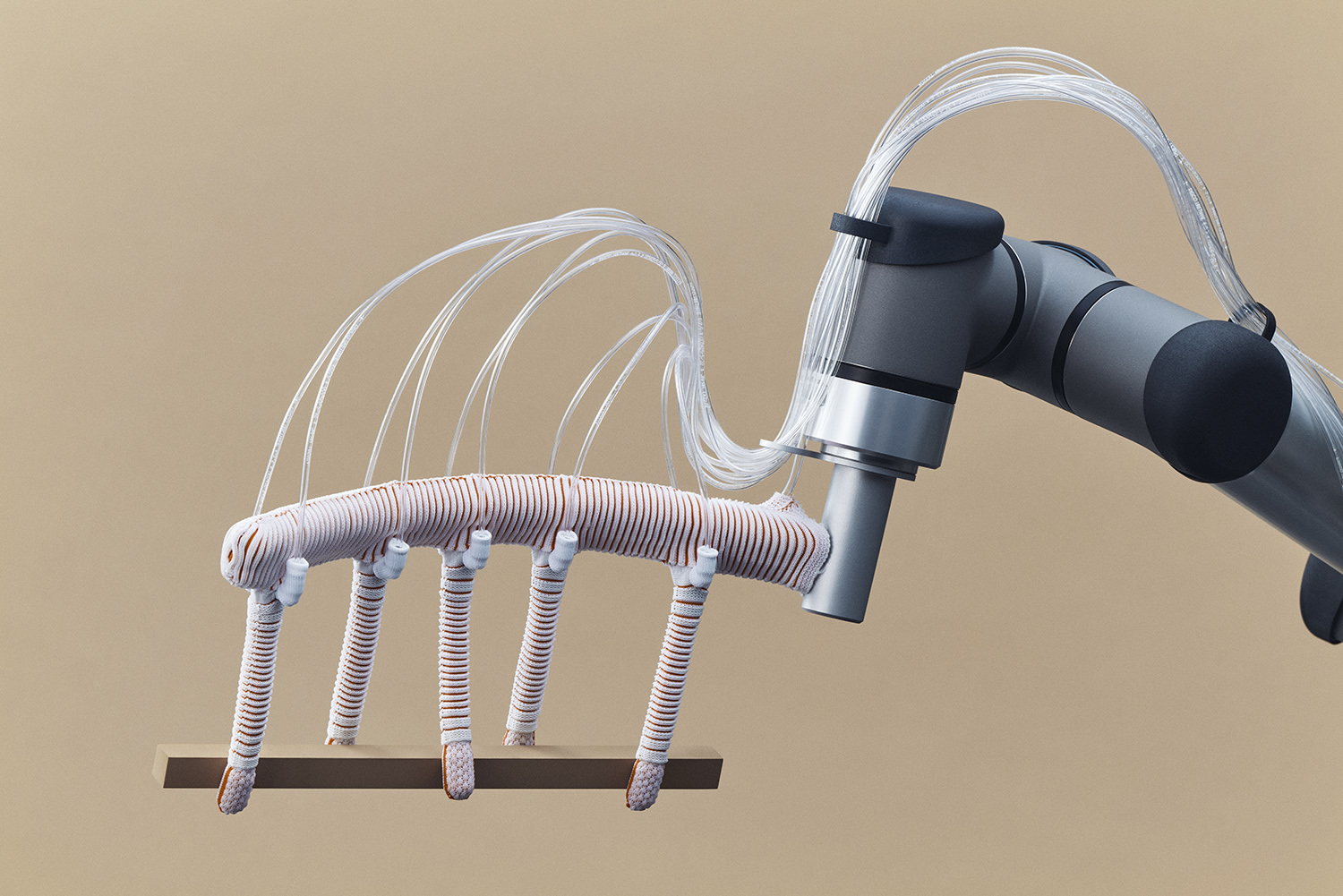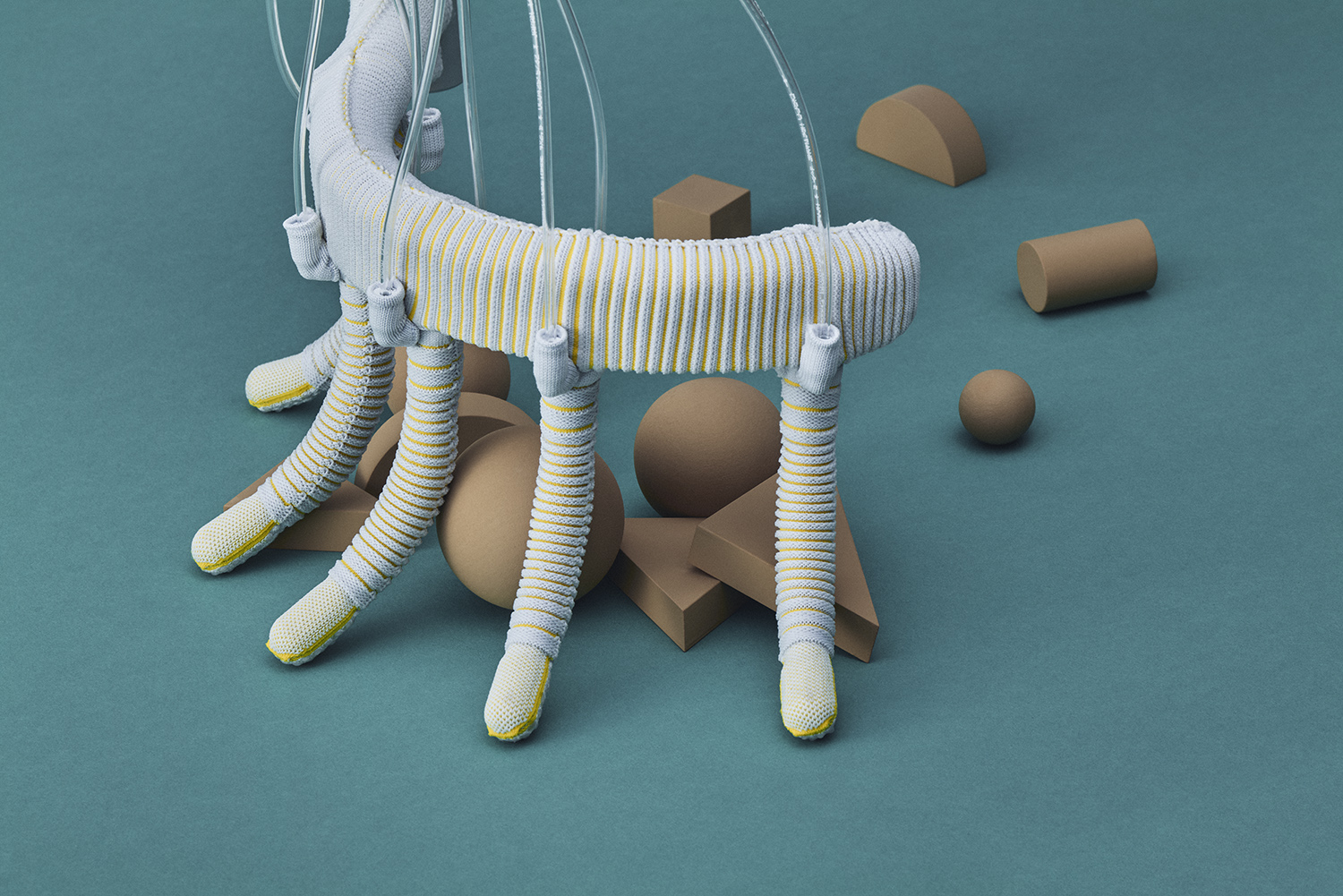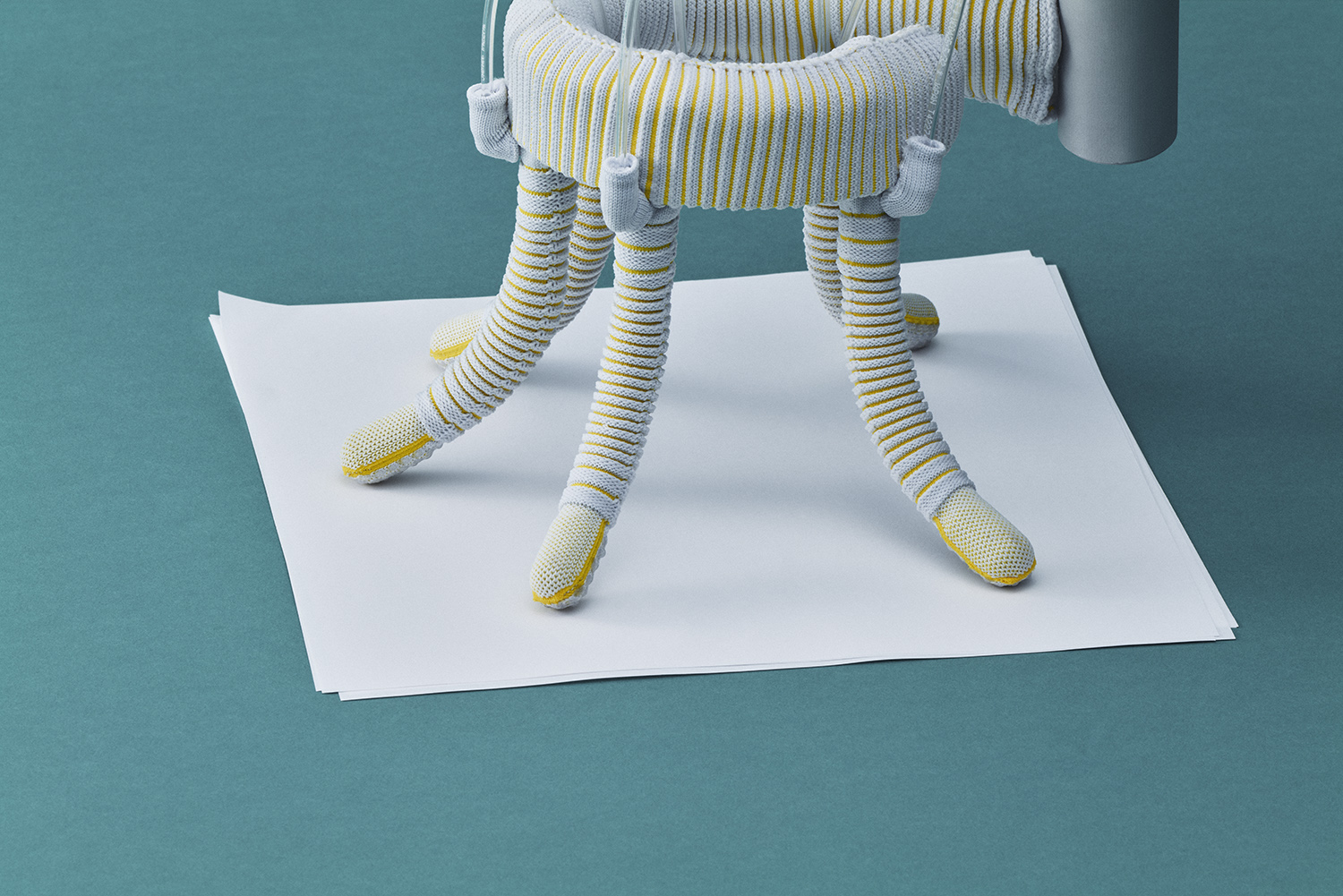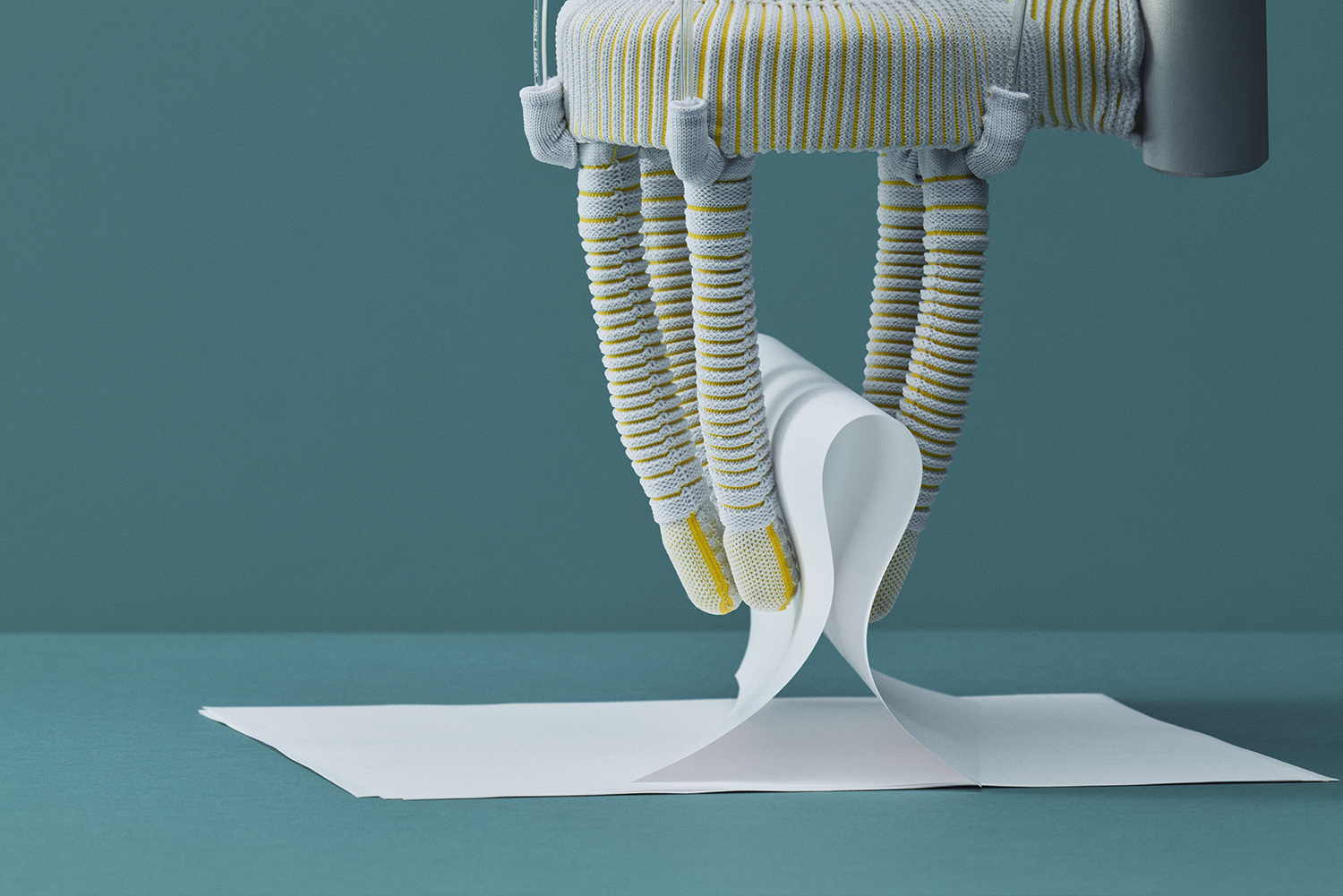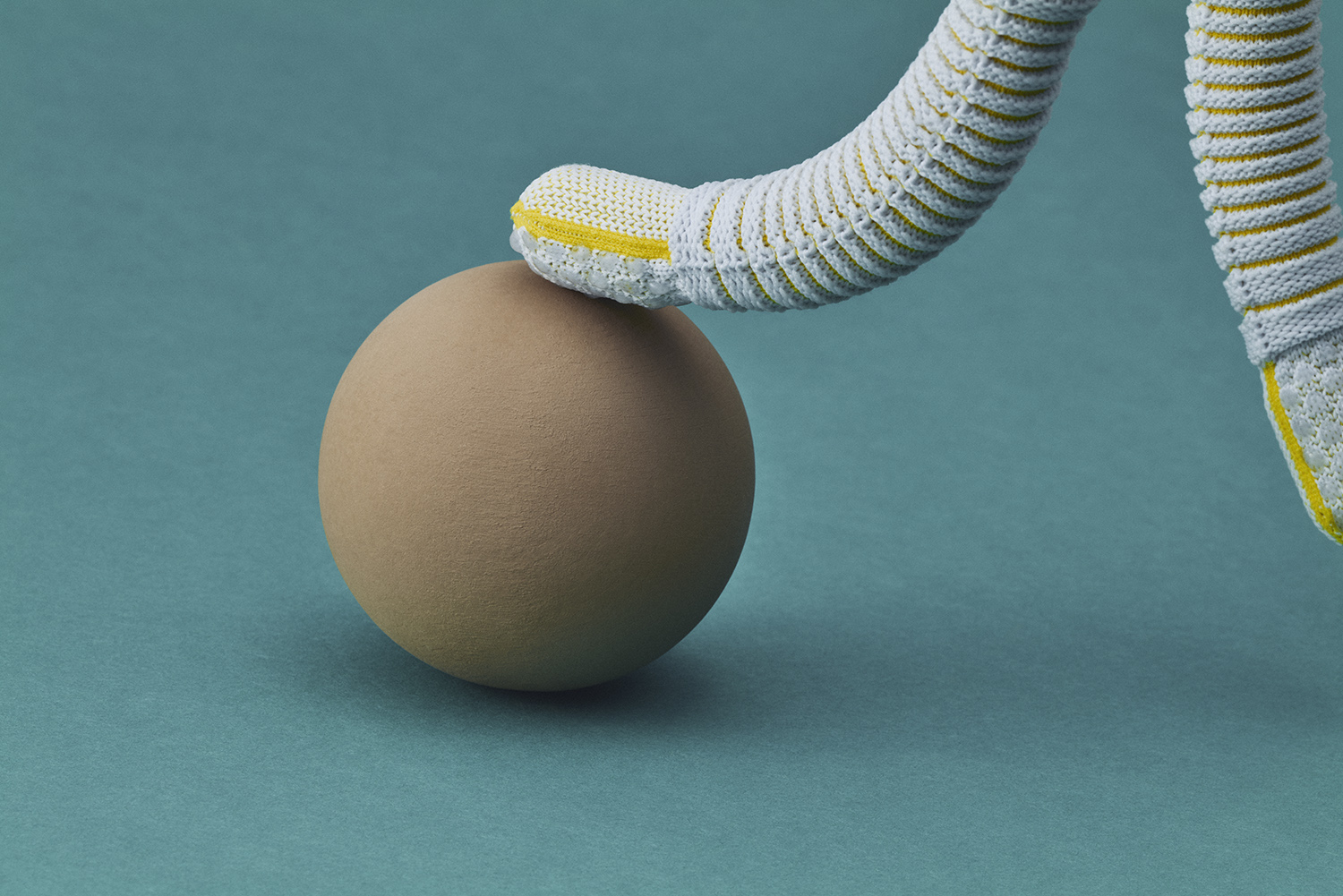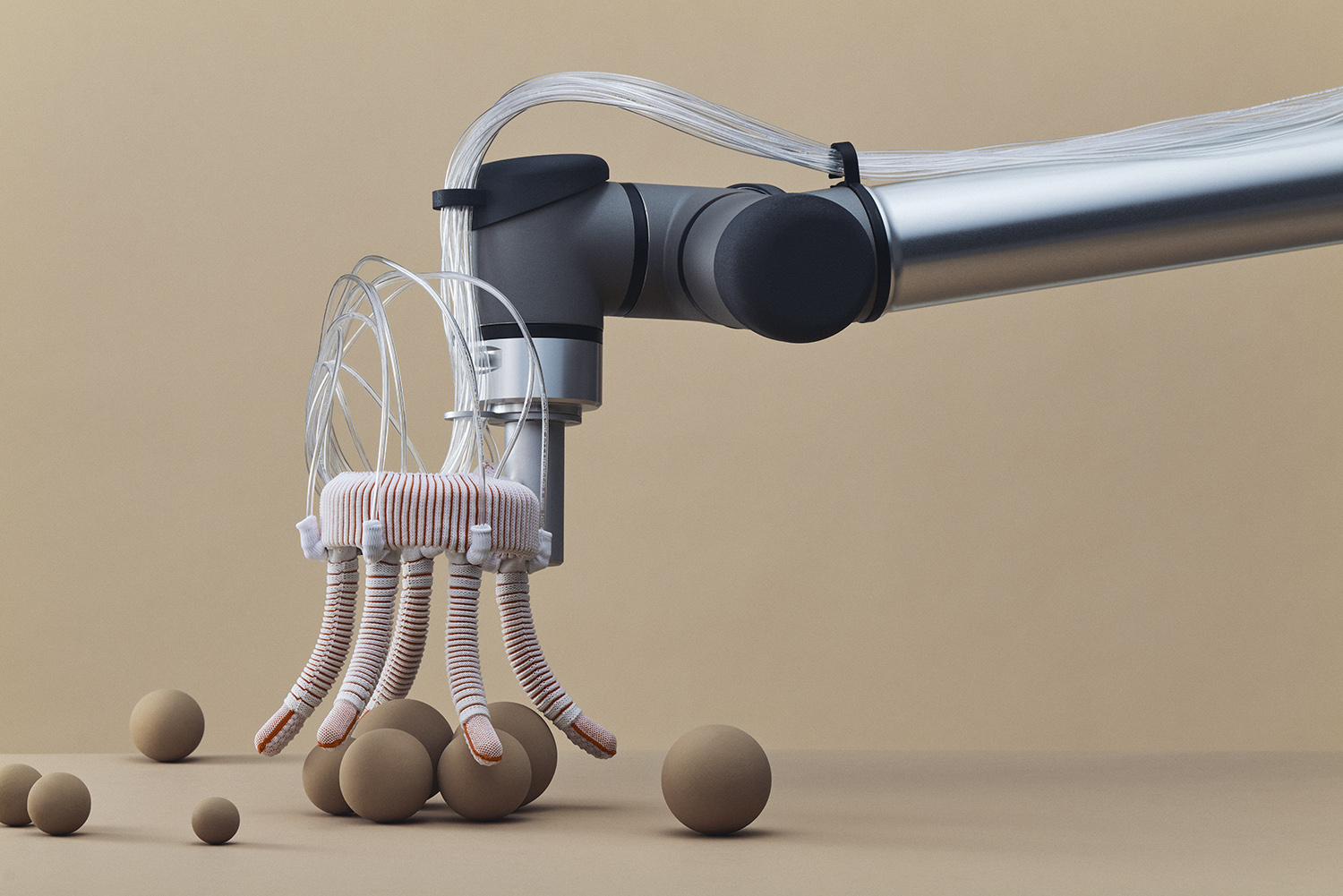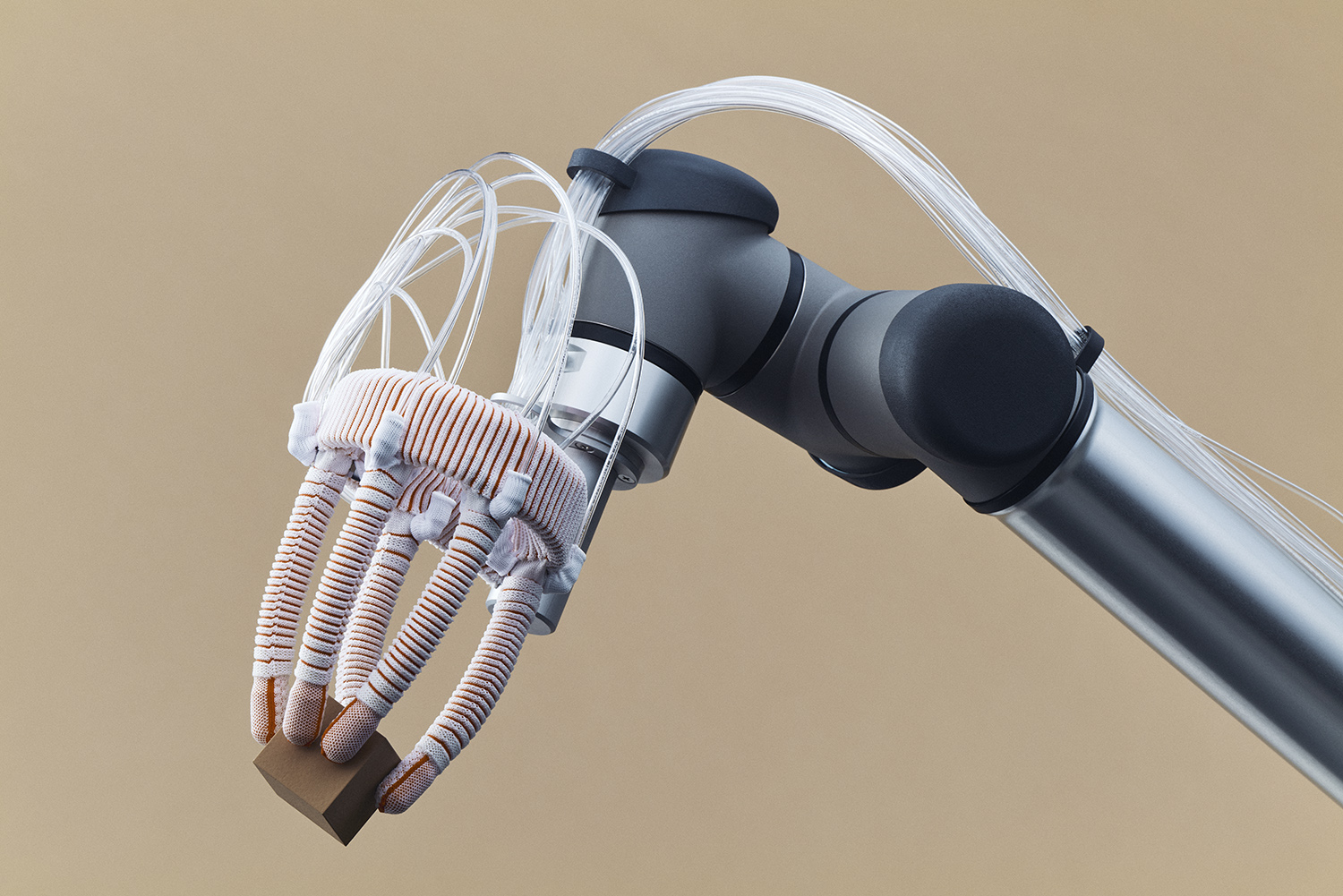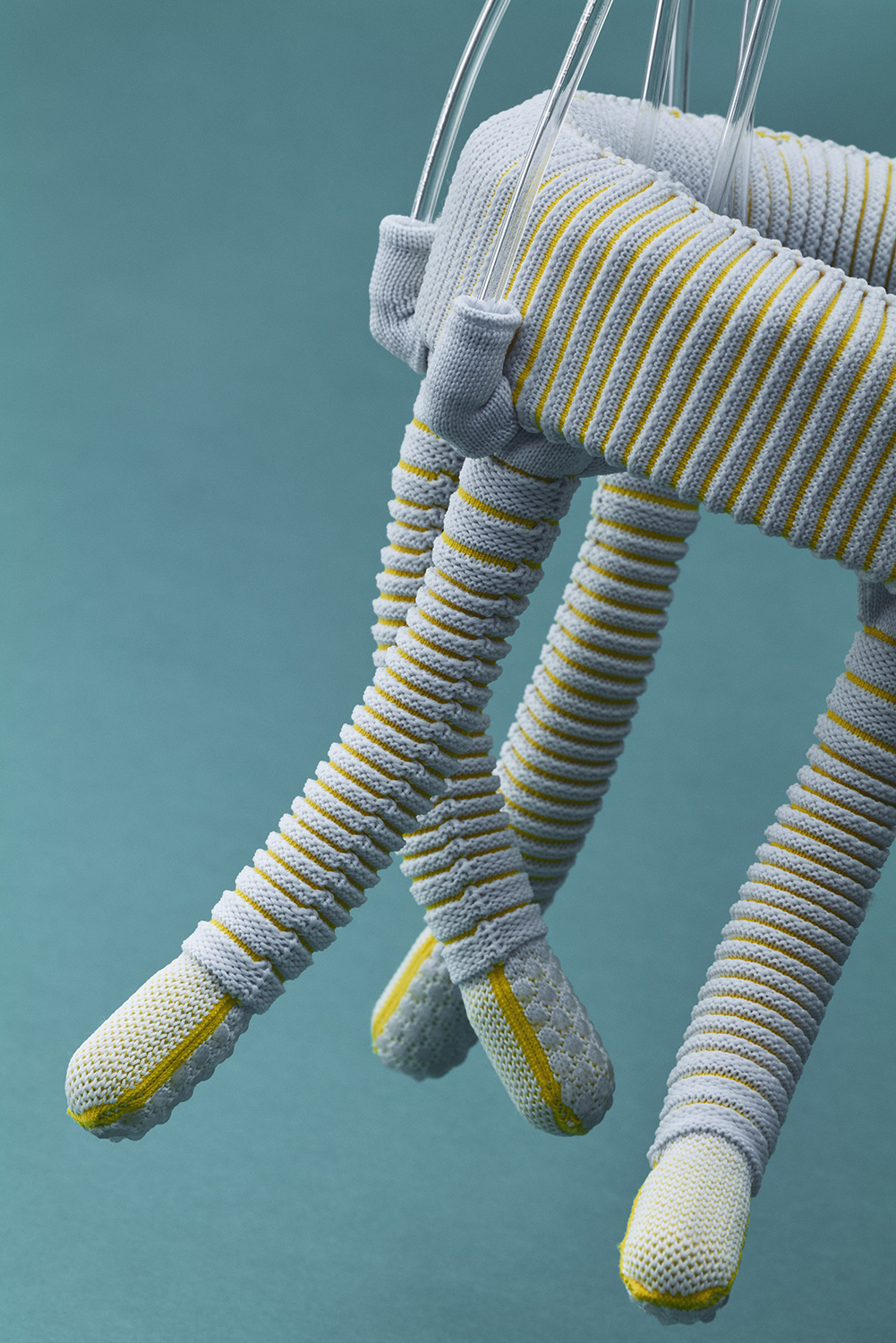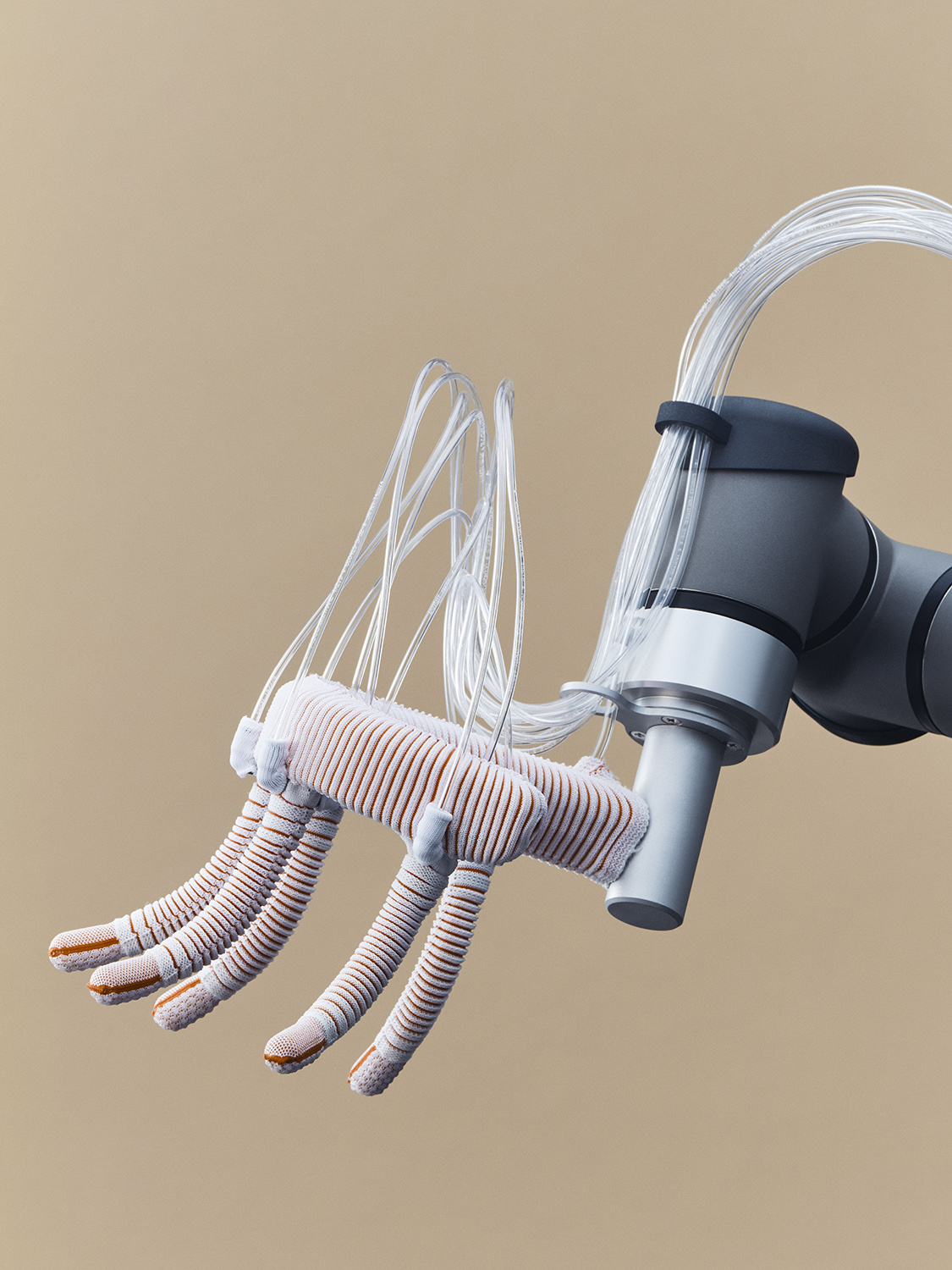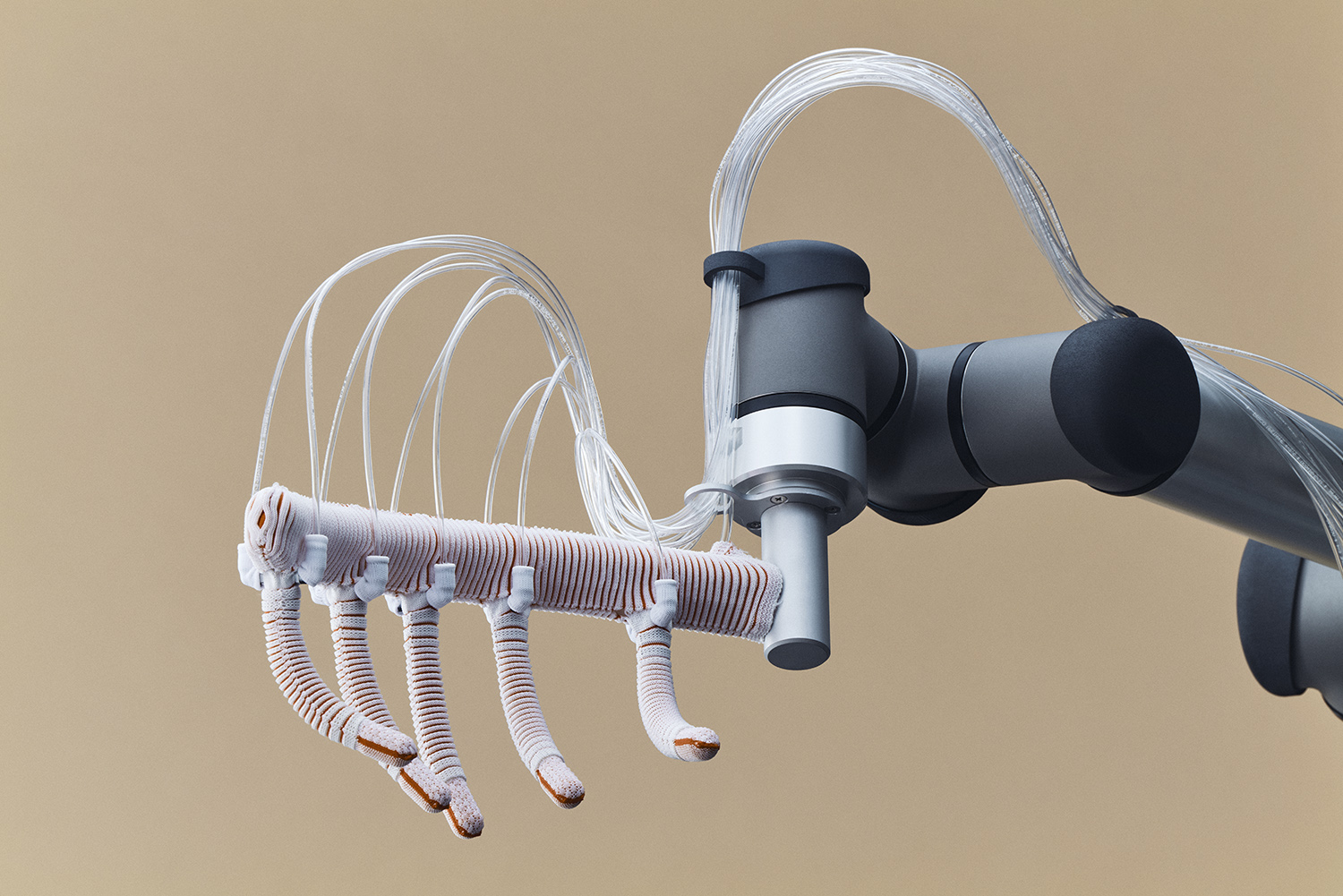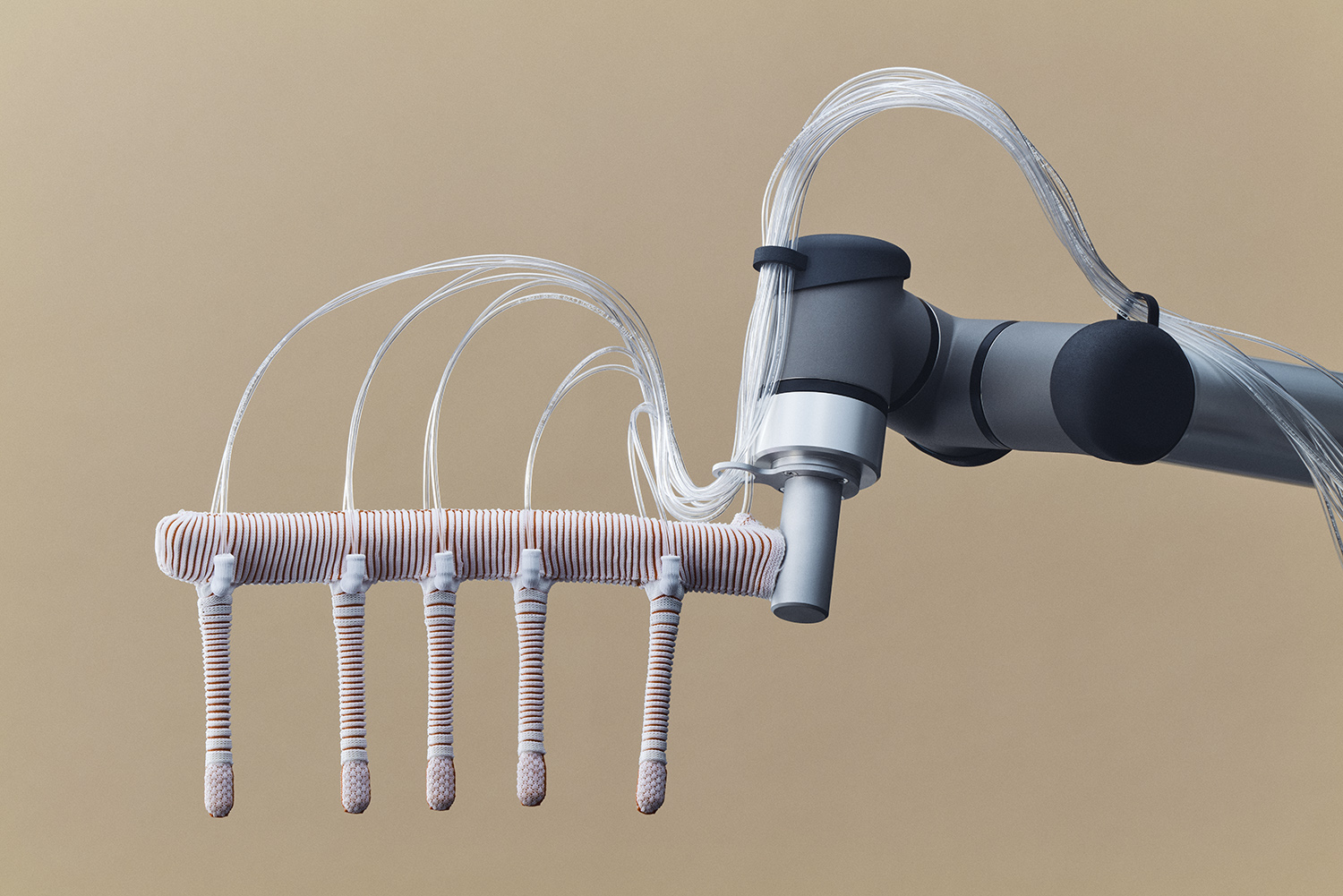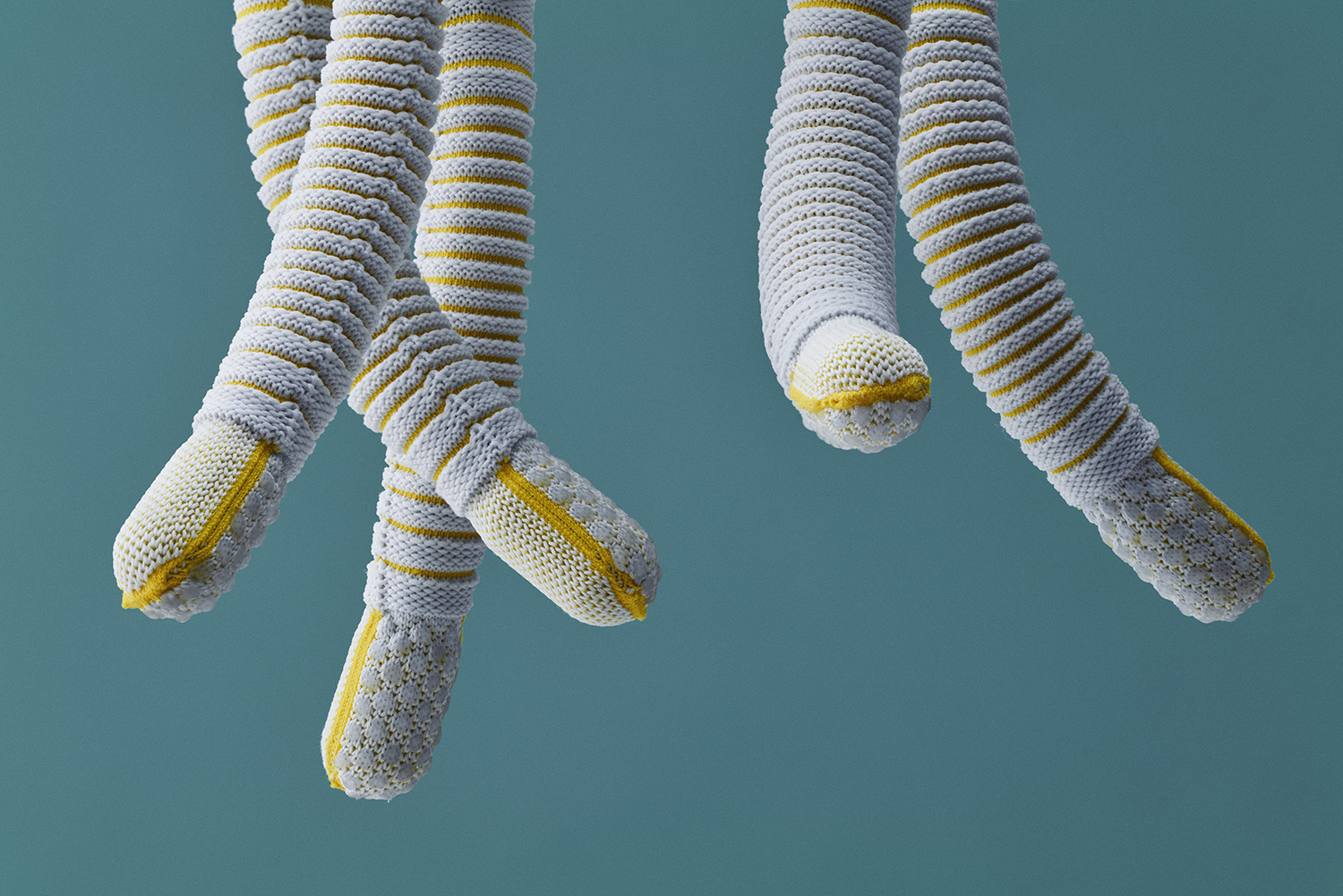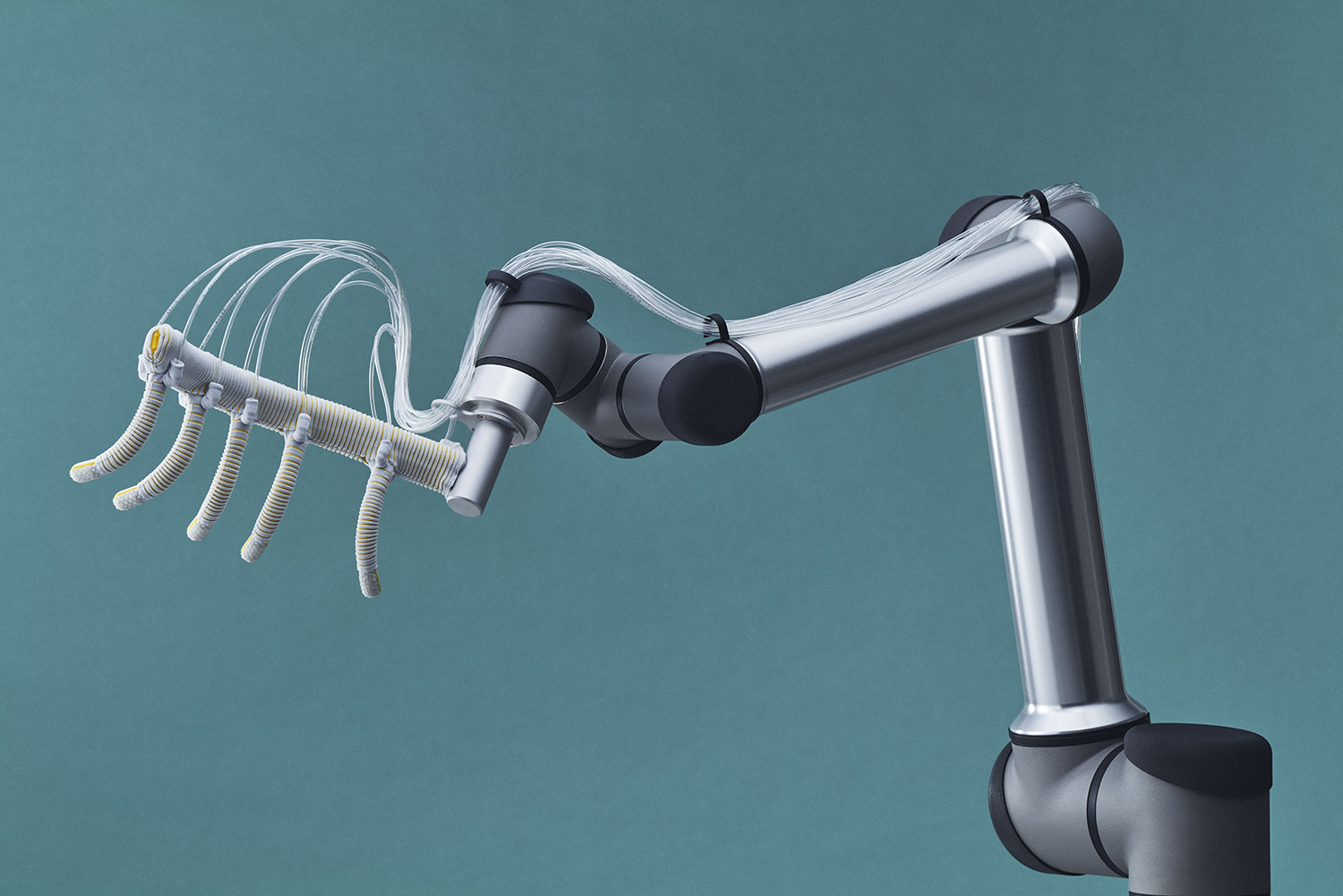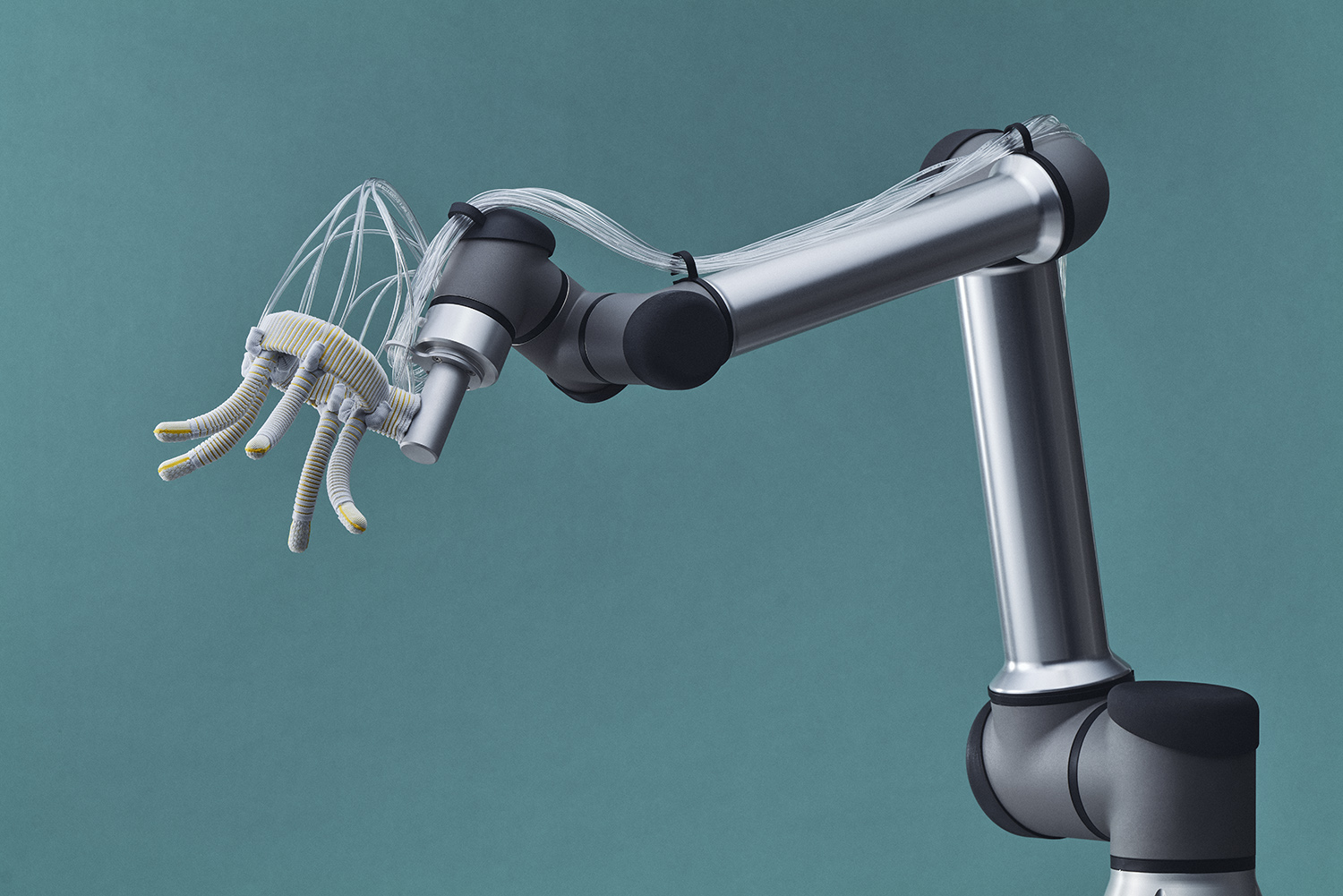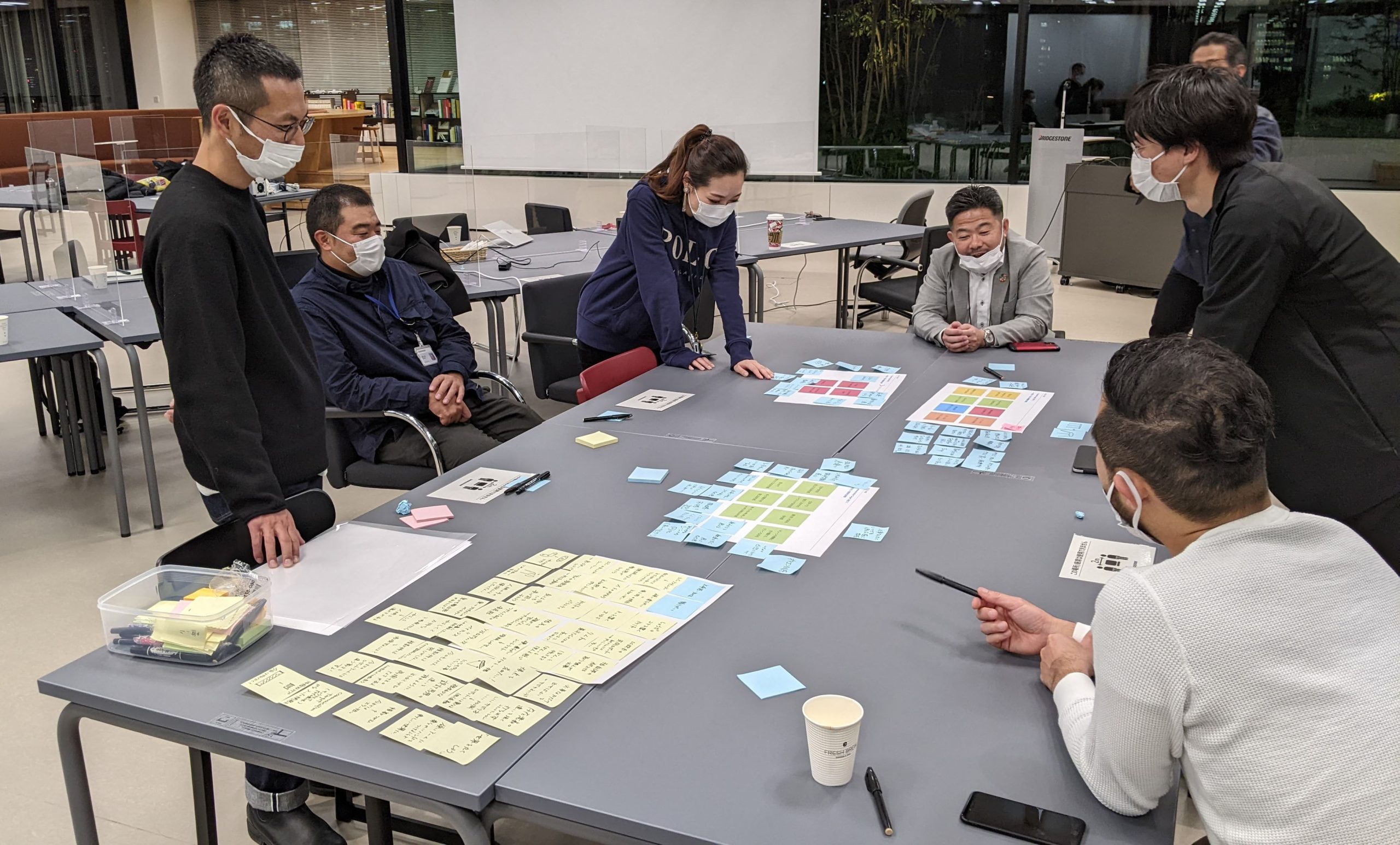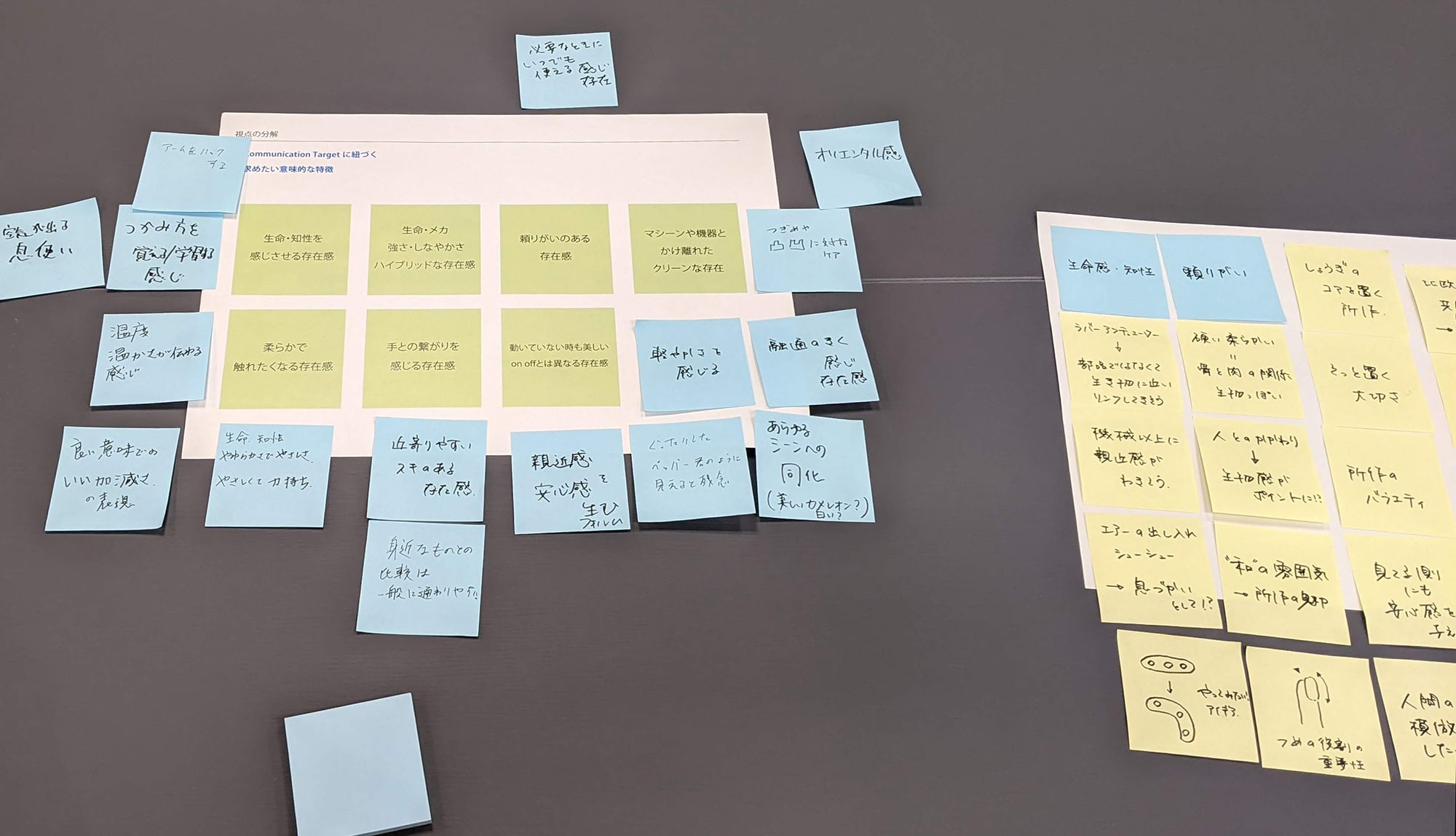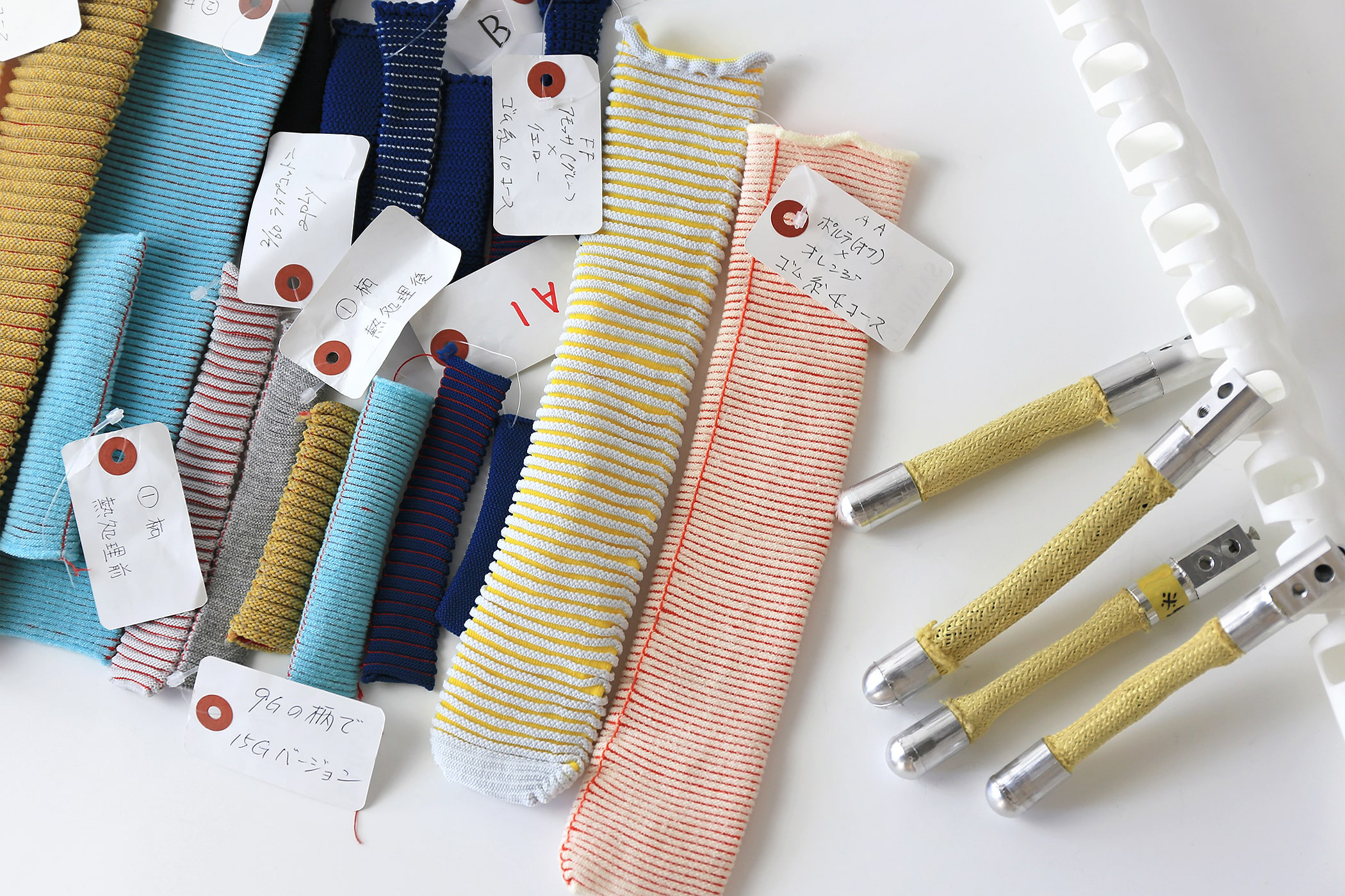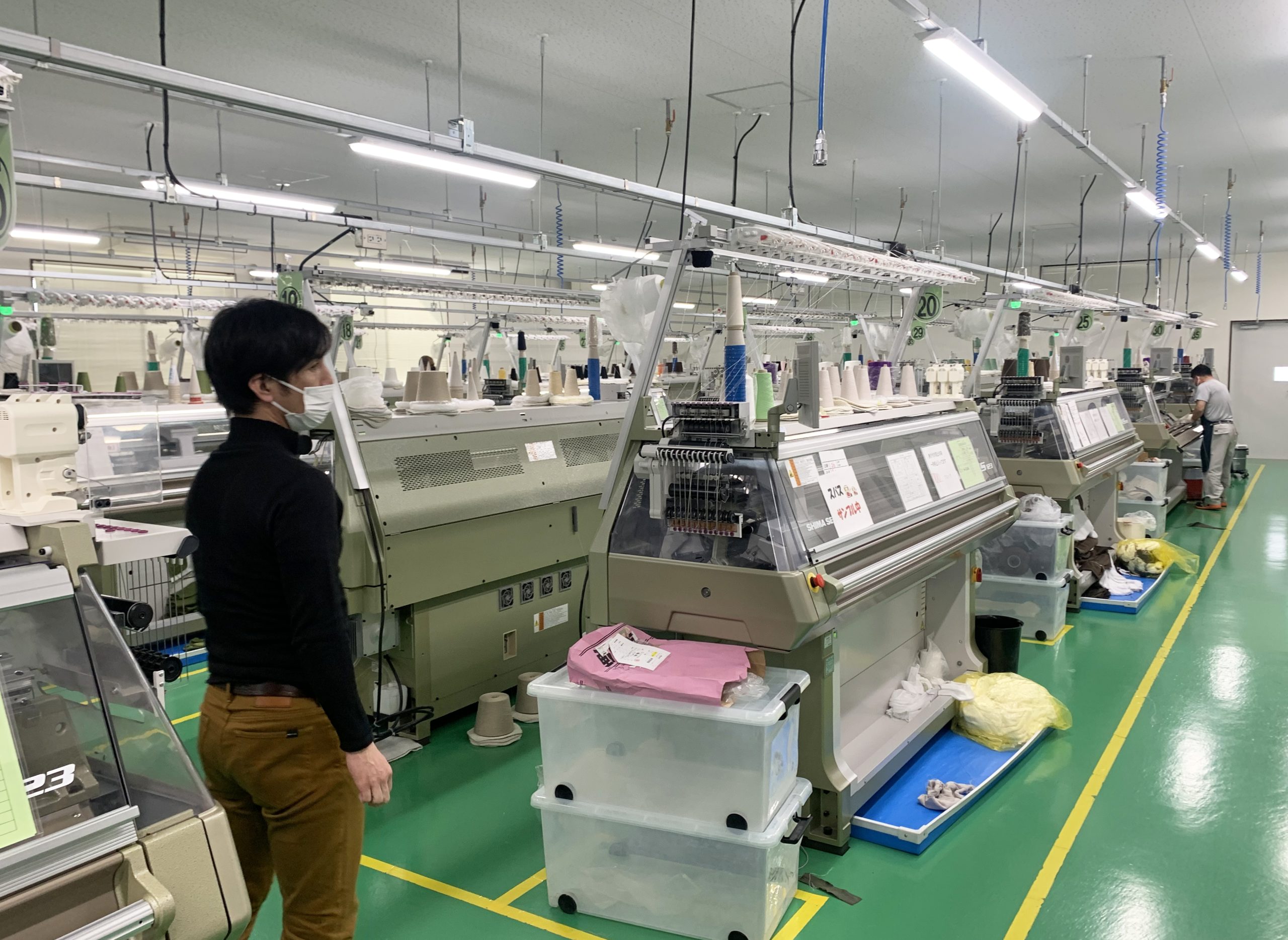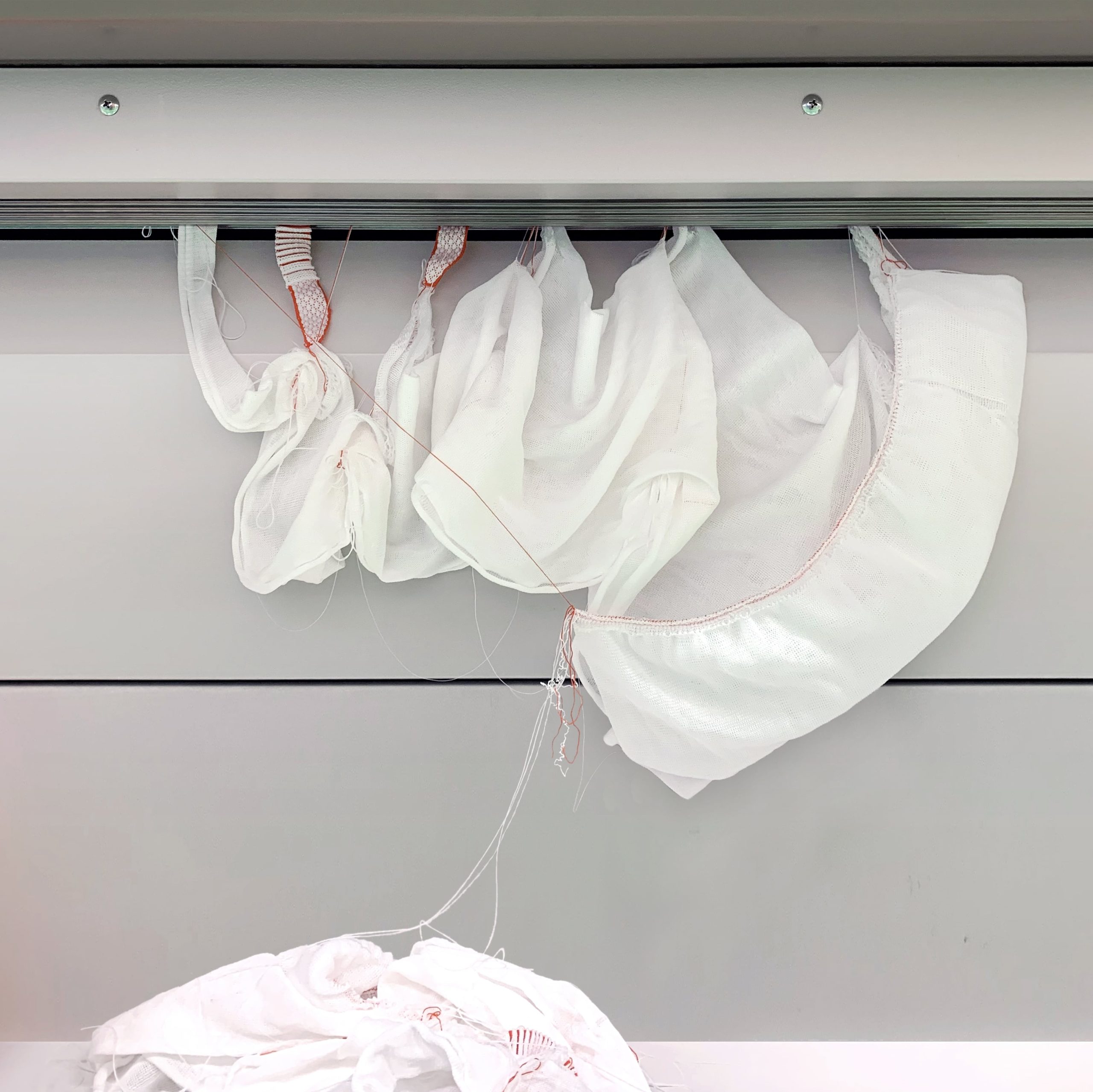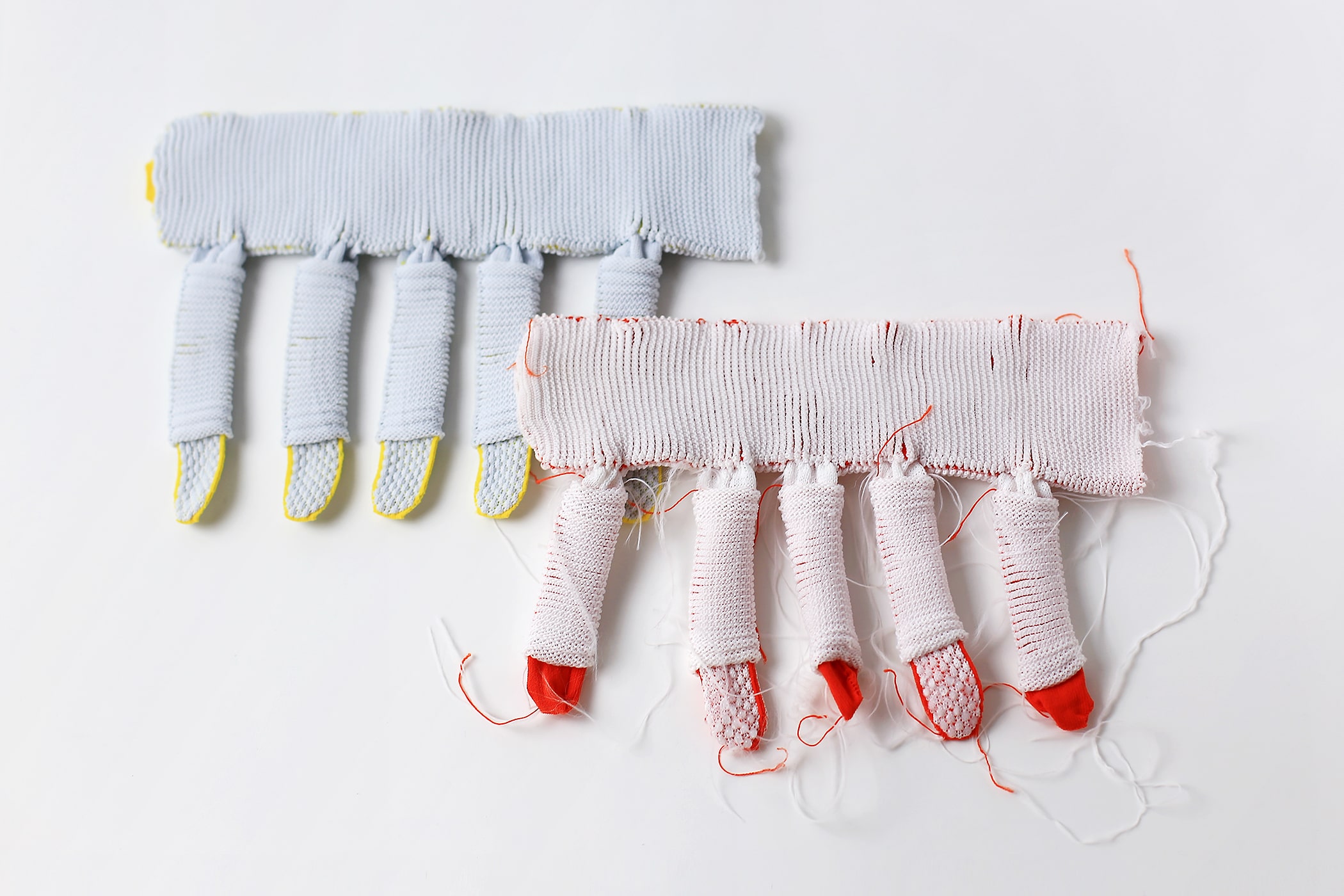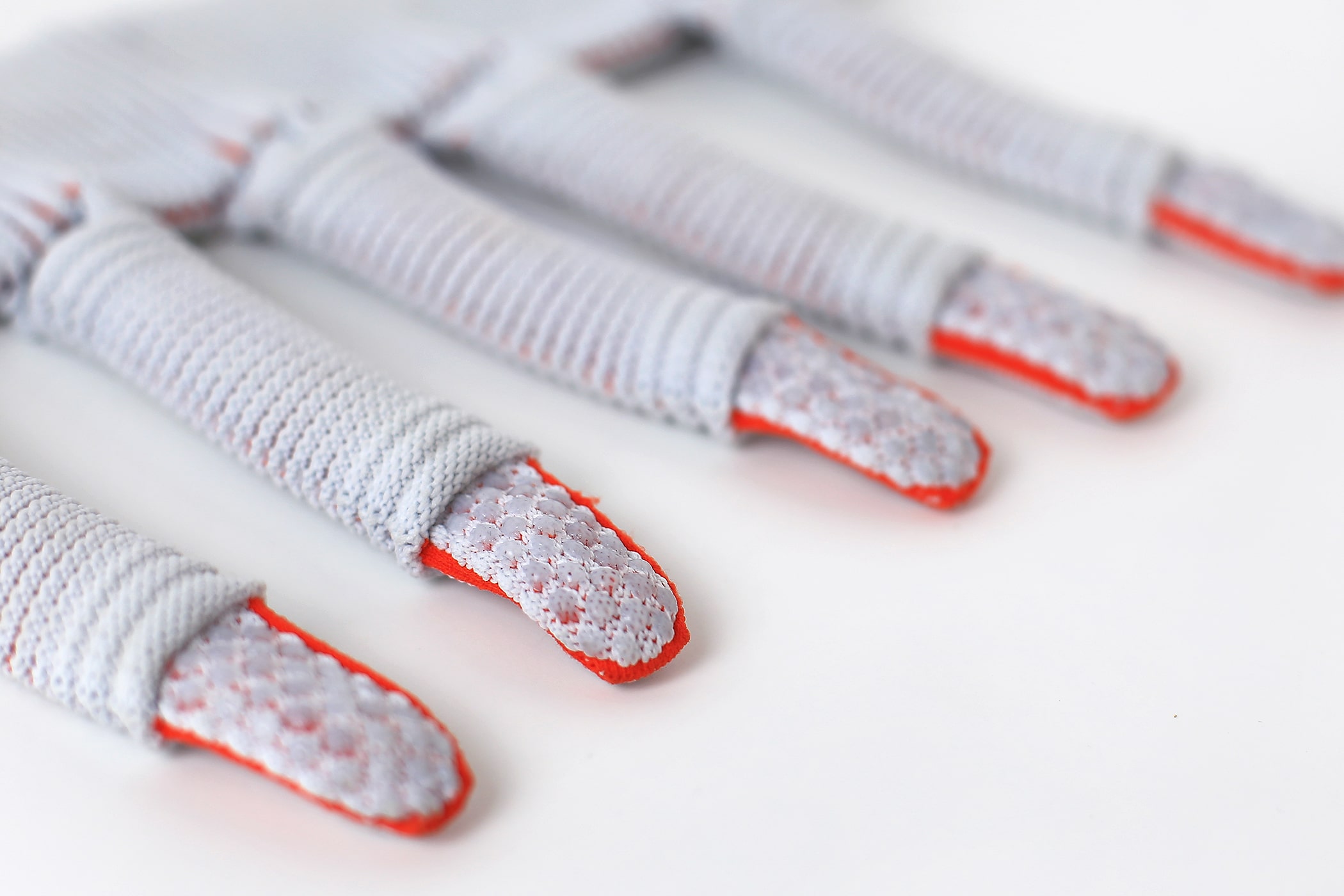
-
DATA
2022/8
-
CLIENT
-
PROJECT NAME
Dialogue
PHOTO
Masaki Ogawa
※Except experimental and under construction photos.VIDEO
LINK
Bridgestone Softrobotics ventures
IF DESIGN AWARD 2023 GOLD AWARD
Collaborate
749399458Creating “Expressions” through Design
Bridgestone, a company with a century of expertise in rubber, is venturing into a new frontier with softrobotics. We have undertaken the task of developing a concept model for their robotic hand, collaborating from the initial stage of vision formulation all the way to its actualization, all through a design-focused approach.
Thanks to advancements in AI and other technologies, intelligent systems have become increasingly sophisticated and flexible. However, the rigid hardware that typifies most robots has not kept pace with the trend, leaving human-robot interactions somewhat awkward. Bridgestone’s softrobotics aims to break through these limitations by creating entities that move flexibly, enabled by rubber and air.
We initially established “dialogue” as the core vision for the project, shared among all team members. We believe that raising the ability to adapt dynamically to various situations to the level of “dialogue” is the ultimate goal we should aim for. With this vision as our guide, we have proposed and actualized not just flexible finger movements but also various other mechanisms that adapt according to the situation, all while moving through the prototyping phase.
Moreover, we have adopted “seamless knit,” a material commonly found in the fashion industry, as an innovative design approach for the robot’s exterior. With the knitting pattern carefully chosen, the color of the inner surface becomes visible as the hand flexes, reminiscent of a facial expression—almost as if the robot is blushing. Just like how facial expressions facilitate smoother dialogue, this nuanced “change” in appearance fosters a friendlier impression, setting it apart from the rigid “transformations” seen in conventional robots.
To realize our aspirational vision, we are integrating technology and artistic expression at a high level in our design. We believe that by setting and sharing a unified vision, and by adopting a flexible design approach that transcends existing limitations, we can significantly contribute to the project’s success. This initiative represents the role of design in its most effective way.



